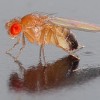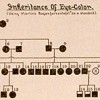Hybrid Vigor in Corn and People
 The recent completion of the maize (corn) genome sequence gives us pause to think about the historical connection between agriculture and eugenics. It also causes us to consider why the leading American eugenicist, Charles Davenport, failed take greater stock in the corn research going on at one of several institutions he presided over at Cold Spring Harbor.
The recent completion of the maize (corn) genome sequence gives us pause to think about the historical connection between agriculture and eugenics. It also causes us to consider why the leading American eugenicist, Charles Davenport, failed take greater stock in the corn research going on at one of several institutions he presided over at Cold Spring Harbor.
Especially in the United States, eugenics was firmly grounded in agriculture. Many of the leaders of the American movement had backgrounds in plant and animal breeding. For example, prior to becoming superintendent of the Eugenics Record Office (ERO) at Cold Spring Harbor, Harry Laughlin had corresponded with Davenport about their shared interest in breeding fancy chickens. During the first decade of the 20th century, Davenport was secretary of the eugenics section of the American Breeders Association, and his slight book made clear the agricultural connection, “Eugenics: The Science of Human Improvement by Better Breeding.”
Another of Davenport’s Cold Spring Harbor institutions, the Carnegie Station for Experimental Evolution, also followed an agricultural bent. Its researchers used domestic plants and animals to set up controlled experiments to test evolutionary theory. At the same time that Laughlin and Davenport were establishing the ERO in 1910, Carnegie researcher George Harrison Shull was finishing a series of experiments on hybrid vigor in corn. For several generations he bred individual corn plants against themselves, watching as each inbred line grew less productive and more susceptible to disease. However, crossing two inbred lines maximized heterozygous traits and produced vigorous, highly productive offspring.
Shull’s work on hybrid vigor flew in the face of the eugenic pronouncement of “like with like” and the ERO’s campaign against inter-racial marriages. Race Crossing in Jamaica, published in 1929, was Davenport’s final attempt to provide a scientific rationale for racial purity. After more than 400 pages of data and analysis the best he could conclude was that that race mixing produced “physical, mental, and instinct disharmonies.” On mental tests, he judged a higher proportion of “browns” in Jamaica were “muddled and wuzzle-headed,” whatever that means. Eugenicists extended the concept of race to different ethnic and religious groups, so eugenics provided the Nazis a “scientific” justification for their ban on inter-racial marriages between Germans and Jews that began the march to the Holocaust.
Ultimately, Shull’s method was used to increase corn yield five-fold in the U.S., whereas the restrictive marriage laws promulgated in the U.S. and Germany led to heartbreak. Of course, Shull’s method of crossing inbred lines could not actually be applied to humans. However, his sense of hybrids accentuating the fundamental qualities of two different biological lines has actually been born out by centuries of harmonious cross-cultural and cross–racial marriages. There never was any biological basis for restricting mixed-race marriages, and eugenicists’ “data” on this subject was colored by bigotry. People, like corn or any other organism, benefit from gene mixing that increases heterozygous traits.
| Print article | This entry was posted by David Micklos on November 30, 2009 at 11:54 am, and is filed under Eugenics Archive. Follow any responses to this post through RSS 2.0. You can skip to the end and leave a response. Pinging is currently not allowed. |










